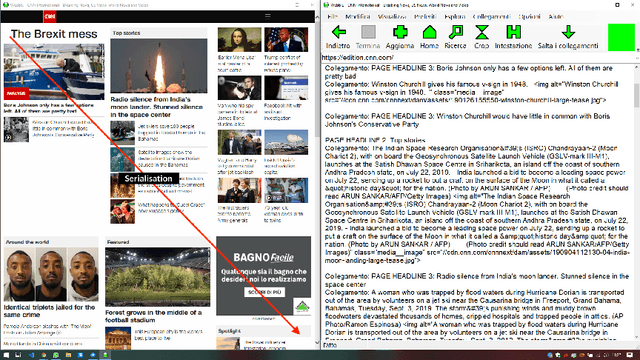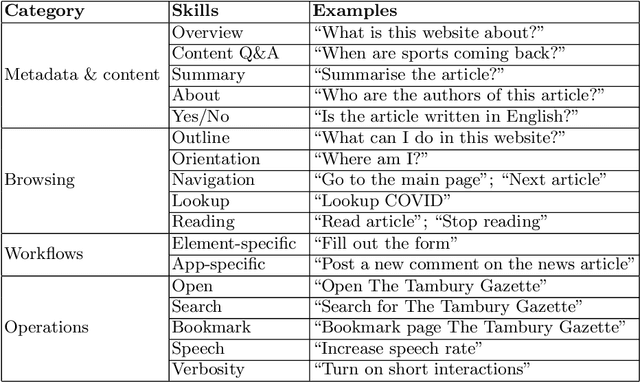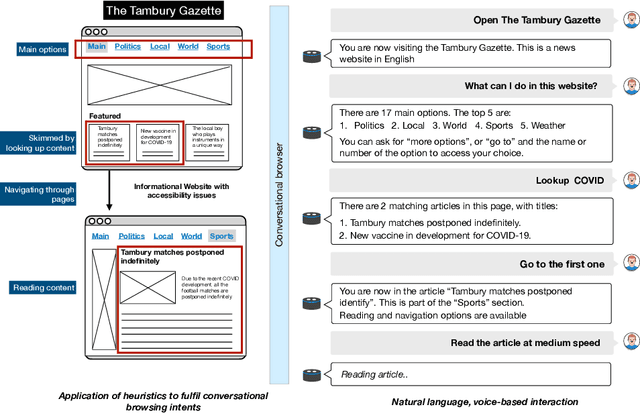Bringing Cognitive Augmentation to Web Browsing Accessibility
Paper and Code
Dec 07, 2020



In this paper we explore the opportunities brought by cognitive augmentation to provide a more natural and accessible web browsing experience. We explore these opportunities through \textit{conversational web browsing}, an emerging interaction paradigm for the Web that enables blind and visually impaired users (BVIP), as well as regular users, to access the contents and features of websites through conversational agents. Informed by the literature, our previous work and prototyping exercises, we derive a conceptual framework for supporting BVIP conversational web browsing needs, to then focus on the challenges of automatically providing this support, describing our early work and prototype that leverage heuristics that consider structural and content features only.
 Add to Chrome
Add to Chrome Add to Firefox
Add to Firefox Add to Edge
Add to Edge